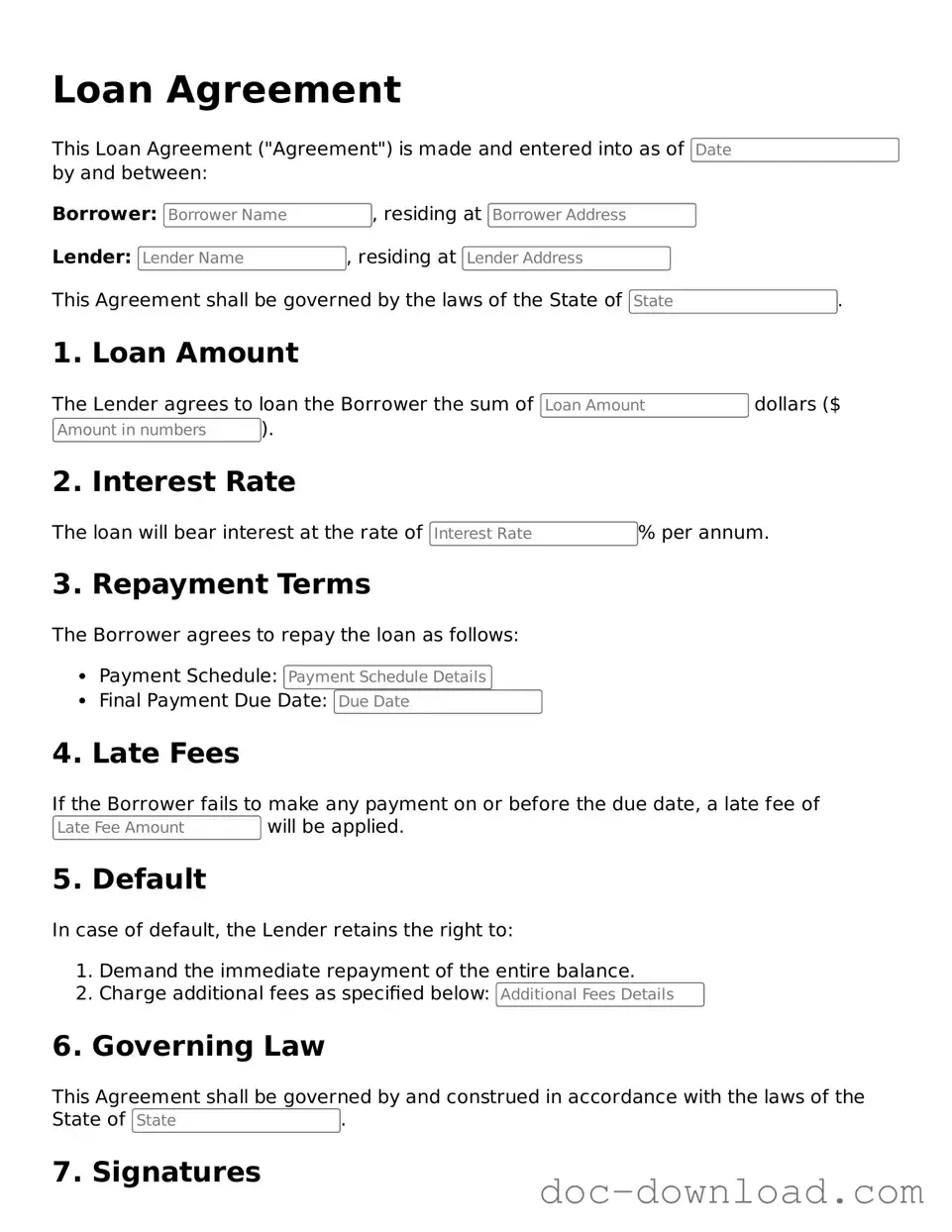A promissory note is a financial document that outlines a borrower's promise to repay a loan under specified terms. Similar to a Loan Agreement, it includes details such as the amount borrowed, interest rate, and repayment schedule. However, a promissory note is generally simpler and may not contain the extensive terms and conditions found in a Loan Agreement. It serves as a straightforward acknowledgment of debt, while the Loan Agreement provides a more comprehensive framework for the lender and borrower relationship.
A mortgage agreement is another document closely related to a Loan Agreement, particularly in real estate transactions. This document secures the loan with the property itself, meaning if the borrower defaults, the lender can claim the property. While a Loan Agreement outlines the terms of the loan, a mortgage agreement specifies the collateral involved and the legal rights of both parties concerning the property. Both documents work together to protect the lender's interests while detailing the borrower's obligations.
A lease agreement shares similarities with a Loan Agreement in that both involve a contractual arrangement between two parties. In a lease agreement, one party (the lessor) allows another party (the lessee) to use property for a specified period in exchange for payment. Like a Loan Agreement, it outlines payment terms, duration, and responsibilities of both parties. However, while a Loan Agreement pertains to borrowing money, a lease agreement focuses on the rental of property, making it essential for different contexts.
An installment agreement is akin to a Loan Agreement in that it allows borrowers to repay a debt over time through scheduled payments. This type of agreement is often used for larger purchases, like vehicles or appliances. Both documents detail the payment amounts and schedule, but an installment agreement may not cover as many legal protections or stipulations as a Loan Agreement. Nevertheless, they both facilitate structured repayment plans for borrowers.
A credit agreement, often used in credit card or line of credit situations, shares common ground with a Loan Agreement. Both documents define the terms of borrowing, including interest rates, repayment terms, and fees. However, a credit agreement typically allows for more flexible borrowing and repayment options, as borrowers can draw on their credit line as needed. While a Loan Agreement usually pertains to a specific loan amount, a credit agreement provides ongoing access to funds, creating a different financial relationship.
When navigating the complexities of divorce filings, it's crucial to understand the importance of the various forms required by the court. In Georgia, for instance, the Georgia PDF Forms provide essential guidance for individuals preparing to address their marital dissolution, ensuring that they submit all necessary documentation in a format that meets legal standards.
A personal guarantee is another document that complements a Loan Agreement, especially in business loans. This document involves an individual agreeing to be responsible for repaying a loan if the borrowing entity defaults. While the Loan Agreement outlines the terms of the loan, the personal guarantee adds a layer of security for the lender. It ensures that a personal asset may be at stake, reinforcing the commitment of the borrower and providing additional assurance to the lender.
